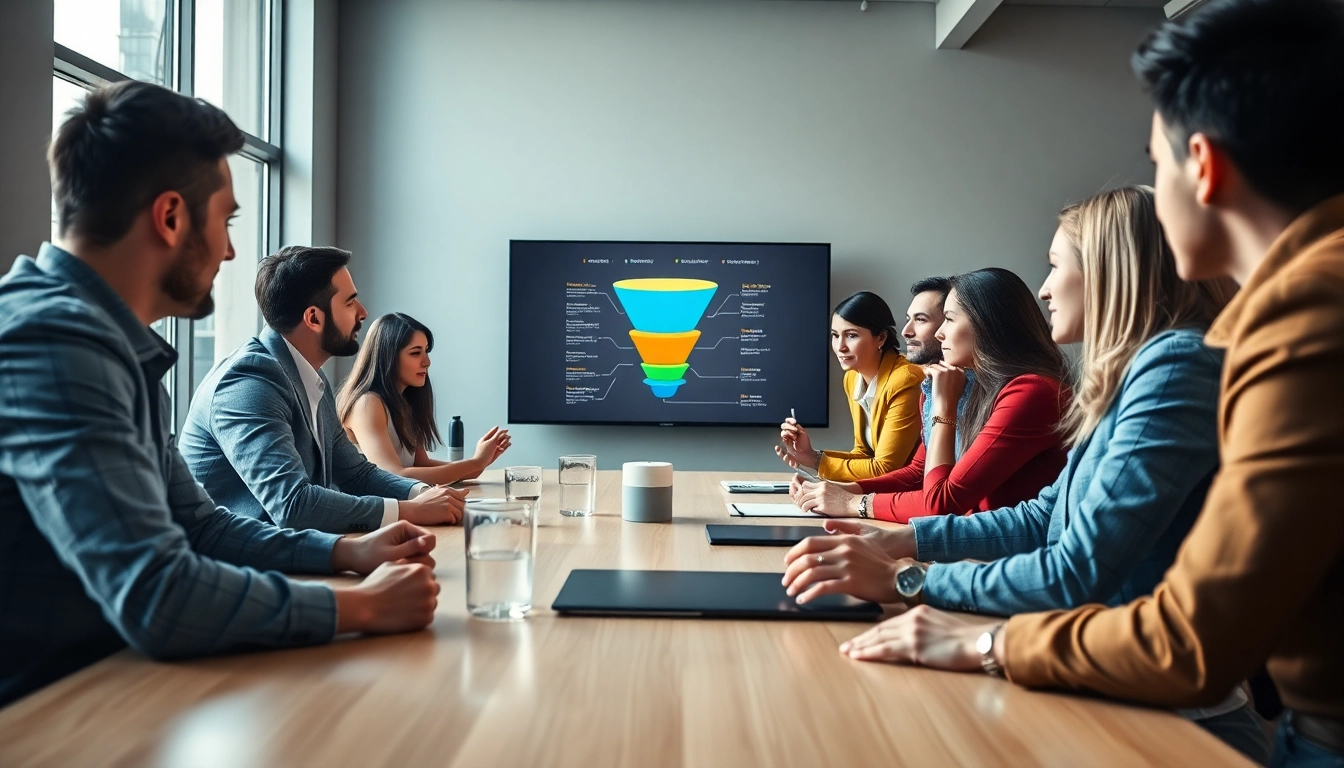Understanding the Basics of Funnelology
The Definition and Importance of Funnelology
Funnelology is the science of systematically guiding potential customers through a structured buying journey, transforming their initial interest into meaningful action, such as purchasing a product or service. It encompasses the design and implementation of sales and marketing funnels that efficiently capture leads, nurture relationships, and enhance conversions. In today’s competitive landscape, understanding the intricacies of Funnelology is critical for businesses seeking sustainable growth and success.
At its core, Funnelology combines marketing psychology, audience analysis, and strategic content delivery to move prospects through various stages of a funnel. Each stage serves a unique purpose in guiding the potential customer closer to making a purchase, thereby increasing the likelihood of conversion and customer retention.
Key Components of a Successful Funnel
A successful funnel is built on several key components:
- Awareness: The top stage, where potential customers first become aware of your brand or offer.
- Interest: In this phase, prospects express interest in your products or services, often by engaging with your content or offerings.
- Consideration: Here, leads evaluate your offer against competitors, assessing benefits and suitability to their needs.
- Intent: At this stage, potential buyers show intent to purchase, often by taking actions like adding items to their shopping cart.
- Action: The final stage is where the conversion occurs—customers complete a purchase or take the desired action.
Each of these components must be optimized to ensure seamless navigation through the funnel, maximizing the conversion potential.
An Overview of Funnel Stages
Funnel stages can often be visualized in a linear path, but in practice, potential customers can move back and forth between stages. Here’s a deeper look into each stage:
- Awareness: Utilize channels like social media, paid advertising, and SEO to generate leads.
- Interest: Engage prospects through informative content, such as blog posts, webinars, and newsletters.
- Consideration: Offer comparison guides, case studies, or testimonials that highlight the value of your offering.
- Intent: Retargeting ads and personalized emails can effectively target users who are showing signs of intent.
- Action: Use clear calls to action, discounts, or trials to prompt immediate purchases.
Types of Funnels in Funnelology
Sales Funnels: From Awareness to Conversion
Sales funnels are designed specifically to convert leads into paying customers. They are structured primarily around the buyer’s journey, focusing on optimizing engagement and conversion rates throughout each stage. Within sales funnels, different tactics can be employed:
- Lead Magnets: Offering free resources (e.g., eBooks, templates) in exchange for contact information.
- Follow-up Sequences: Automated emails that nurture leads based on their interaction history.
- Landing Pages: Dedicated pages that funnel traffic toward a singular call to action, enhancing clarity and focus.
Marketing Funnels: Engaging Your Audience
Marketing funnels can complement sales funnels by focusing on brand awareness and engagement. These funnels prioritize creating connections and establishing trust with potential customers:
- Webinars: Interactive sessions that educate audiences on topics related to your products/services while allowing for Q&A.
- Content Marketing: Regularly publishing valuable, relevant content to keep the target audience engaged and informed.
- Social Media Campaigns: Utilizing platforms to build a community around your brand and drive traffic to your main funnel.
Lead Generation Funnels: Building Your Prospect List
Lead generation funnels focus on attracting leads by offering value up front in exchange for contact information. These funnels often utilize:
- Exclusive Content: Offering items such as whitepapers or exclusive memberships as incentives for sign-ups.
- Contests and Giveaways: Encouraging sharing and engagement while growing your email list.
- Registration Forms: Simple and clear forms that minimize friction while capturing essential lead data.
Creating High-Converting Funnels
Identifying Your Target Audience
Understanding your audience is pivotal for crafting effective funnels. Start by defining buyer personas—fictional representations of your ideal customers based on market research and real data. This helps tailor your messaging and content to resonate with specific segments. Key strategies include:
- Surveys and Interviews: Collect firsthand insights to understand pain points, desires, and motivations.
- Analytics Tools: Use data from your website and social media to identify user behavior patterns.
- Competitor Analysis: Investigate who their audiences are and identify gaps that your product can fill.
Crafting Compelling Content for Each Stage
The content delivered at each funnel stage should align with the prospect’s current mindset. The following approaches can optimize content effectiveness:
- Awareness Stage: Utilize engaging blog posts, infographics, and social media updates that catch attention.
- Interest Stage: Create in-depth guides, videos, and comparison content that nurture curiosity.
- Consideration Stage: Share case studies, testimonials, and product demos that validate your offer.
- Intent Stage: Leverage discounts, bonuses, and limited-time offers to prompt action.
Design Principles That Enhance User Experience
The design of your funnel should facilitate ease of use and provide a positive user experience. Consider these principles:
- Simple Navigation: Ensure that users can easily follow steps without getting lost.
- Clear Call to Action: Make CTAs prominent and action-oriented to guide users toward the next steps.
- Responsive Design: Optimize for mobile devices since a significant amount of traffic comes from smartphones.
Testing and Optimizing Your Funnels
Key Metrics to Monitor for Funnel Performance
Measuring the effectiveness of your funnels is crucial for ongoing optimization. Important metrics to track include:
- Conversion Rate: The percentage of visitors who complete the desired action (purchase, sign-up, etc.).
- Drop-off Rates: Identify at which stage users are exiting the funnel to pinpoint issues.
- Customer Acquisition Cost (CAC): Determine how much it costs to acquire a new customer through your funnel.
A/B Testing Strategies for Funnel Improvement
A/B testing is essential for optimizing your funnel elements effectively. Implement the following strategies:
- Test One Element at a Time: Focus on single changes (e.g., CTA button color) to accurately measure their impact.
- Use Sufficient Sample Sizes: Ensure that your tests have enough participants to yield statistically significant results.
- Analyze and Iterate: Review A/B test results with actionable insights to refine future funnel strategies.
Iterating Based on User Feedback
User feedback is a treasure trove of information for improving your funnels. Implement channels for feedback collection:
- Post-Purchase Surveys: Gather insights immediately after a conversion to understand customer satisfaction.
- Behavioral Analytics: Utilize tools like heatmaps to understand where users click and scroll on your funnel pages.
- Direct Communication: Open lines through chatbots or direct emails to solicit user experiences and suggestions.
Advanced Funnelology Techniques
Integrating Automation into Your Funnels
Marketing automation tools can significantly enhance funnel efficiency by automating repetitive tasks. Focus on integrating:
- Email Sequences: Automate nurturing emails based on user behavior and demographics, saving time and ensuring timely engagement.
- Lead Scoring: Assign scores to leads based on their interactions with your brand to prioritize follow-ups effectively.
- CRM Integration: Seamlessly connect your funnels with customer relationship management tools to manage leads and marketing campaigns efficiently.
Leveraging Data Analytics for Enhanced Results
Data analytics can provide insights and drive strategy adjustments. Effective practices include:
- Segment Analysis: Break down your audience into segments to tailor marketing efforts more specifically.
- Predictive Analytics: Use historical data to forecast future buying behaviors, allowing for tailored marketing approaches.
- Performance Dashboards: Create real-time dashboards to monitor key metrics and make data-led decisions quickly.
Future Trends in Funnelology
Funnelology is evolving with technological advancements and shifts in consumer behavior. Emerging trends include:
- Personalization: Increasing emphasis on personalized experiences throughout the funnel to enhance engagement and conversion.
- AI Integration: The use of artificial intelligence can aid in predictive analysis, chatbots, and personalized content delivery.
- Video Marketing: The rise of video content is changing how messages are delivered, especially in awareness and consideration stages.



